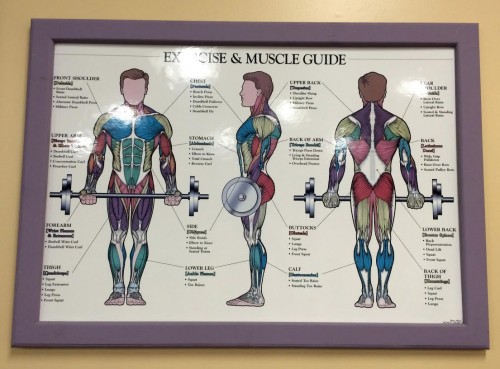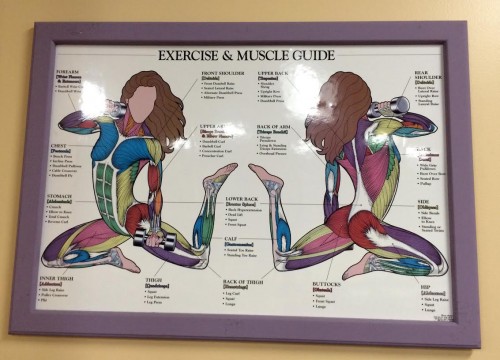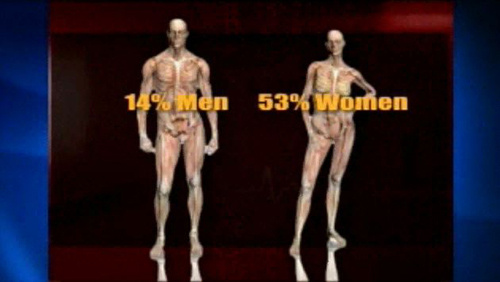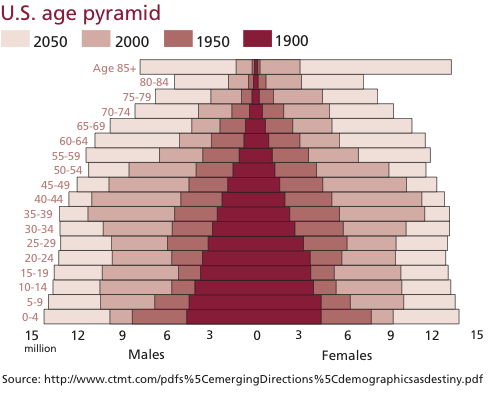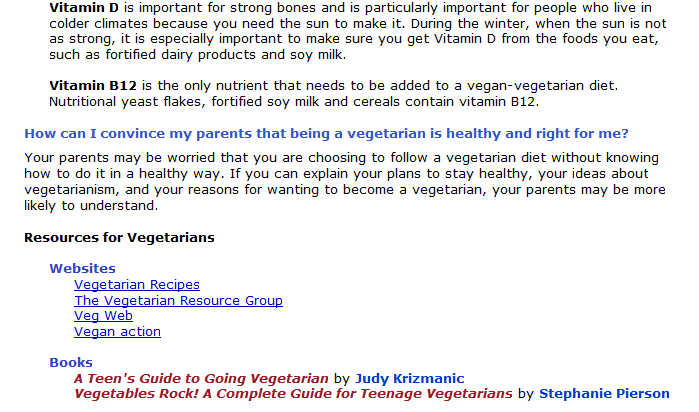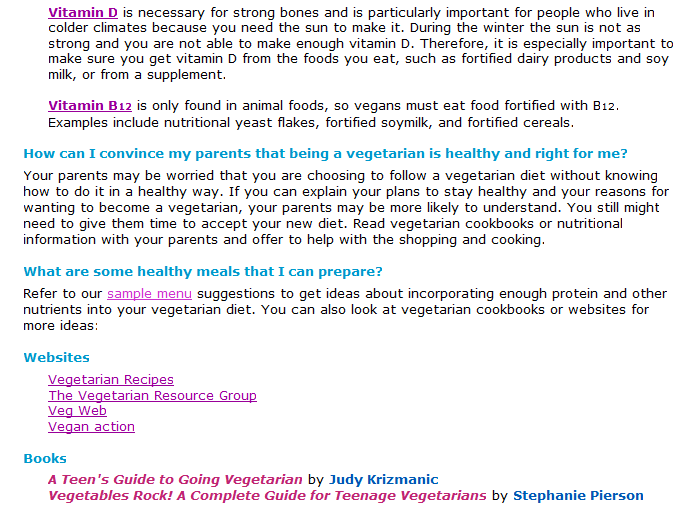Liz B. sent in a screen shot and some commentary. She did such a nice job explaining that I’m just going to let her do it:
I’m an undergraduate student at a Big Ten school, and today I was perusing the course tracking website that gives students access to their grades, their homework etc. One of the features is that you can change the “theme” of the site… I came across the “physiology and anatomy” theme…
What struck me was not that they had a physiological representation of both sexes, but by how gendered their stances are. The man stands straight, looking ahead, even weight distribution. The female form is almost classically passive, hands held behind her back, weight distribution uneven.
Close up:
Liz continues:
Its striking that these notions about gendered bodies are inserted into even seemingly scientifically oriented things. Its a fair assumption that the designers for the site intended this theme for those who are participating in an anatomically related major, people who are being (or should be) trained to view the body, sans socially constructed gender norms. Yet, here, we see a prime example of gender presentation used in a scientific context… [A]re our doctors and scientists being instilled with these kinds of images throughout their academic lives? If so, its no small wonder why there are doctors and scientists who lend credibility to gender norms by operating on them as if they are nature, or why many people view gender as so fatalistically natural.
More examples:
Jennifer sent in these two anatomy illustrations from a gym. “Surprisingly,” she said:
they had one for both men and women – you would think the two would be practically identical and you could get away with a generic figure.
Then I noticed that there was a big difference in how the two sexes were presented. The male figure is standing straight up, lifting a heavy weight. We see him in a simple front, side, and back view. The female figure, however, is posed in a flirtatious manner, and we see her only from the front and back. Even when she doesn’t have skin or facial features, she’s still presenting her chest and butt and tossing her hair to the side. She’s also shown lifting what appear to be very light hand weights.
It’s a problematic message: men go to the gym to become functional and stronger, women come to the gym to become sexually attractive but not TOO strong while they’re at it.
Liz Q. sent us a link to a CBS News video on urinary tract infections (via Jezebel) that included the following anatomical illustration:
Halley M. sent in this image from the Wikipedia entry under “human” and “anatomy.” It presents also presents the female in a decorative, as opposed to illustrative, pose (after the jump because NSFW):



